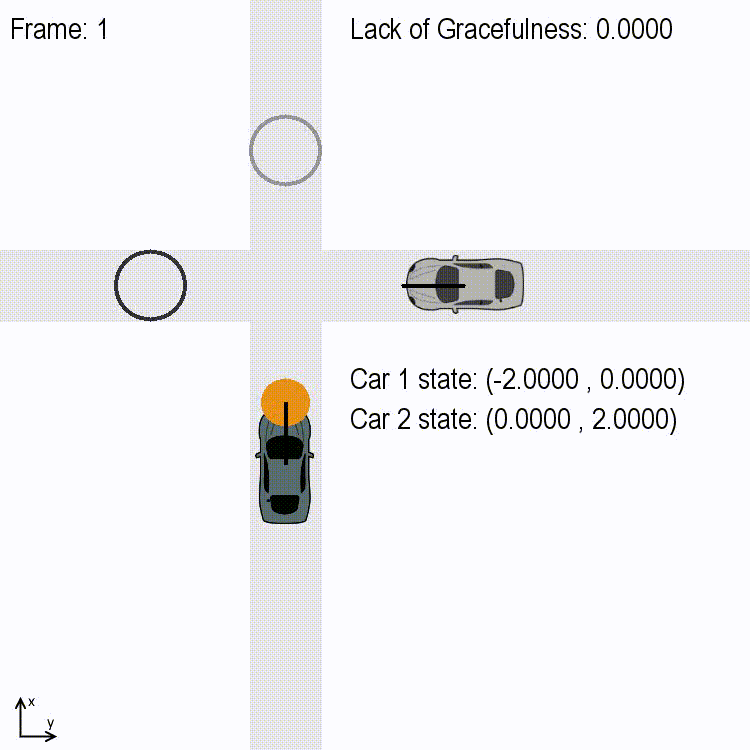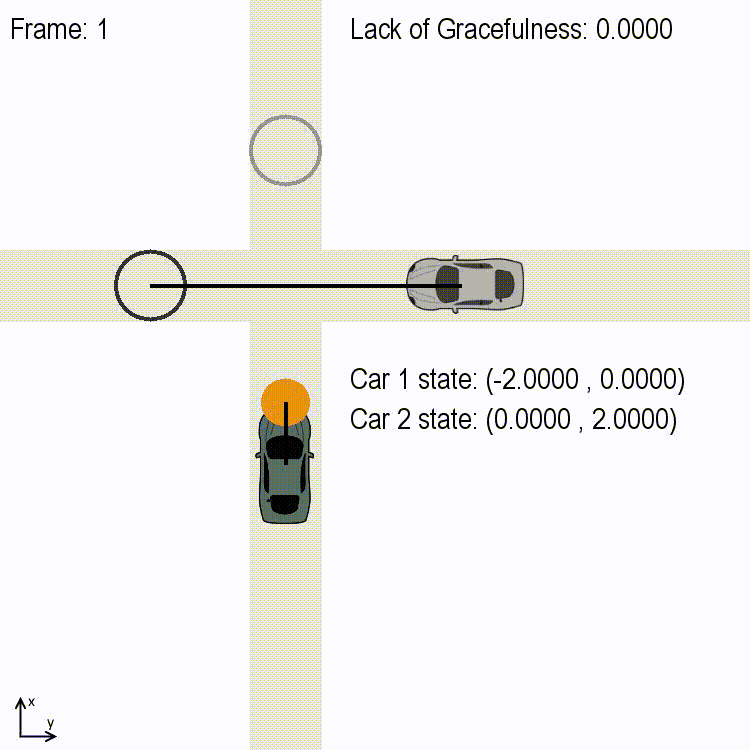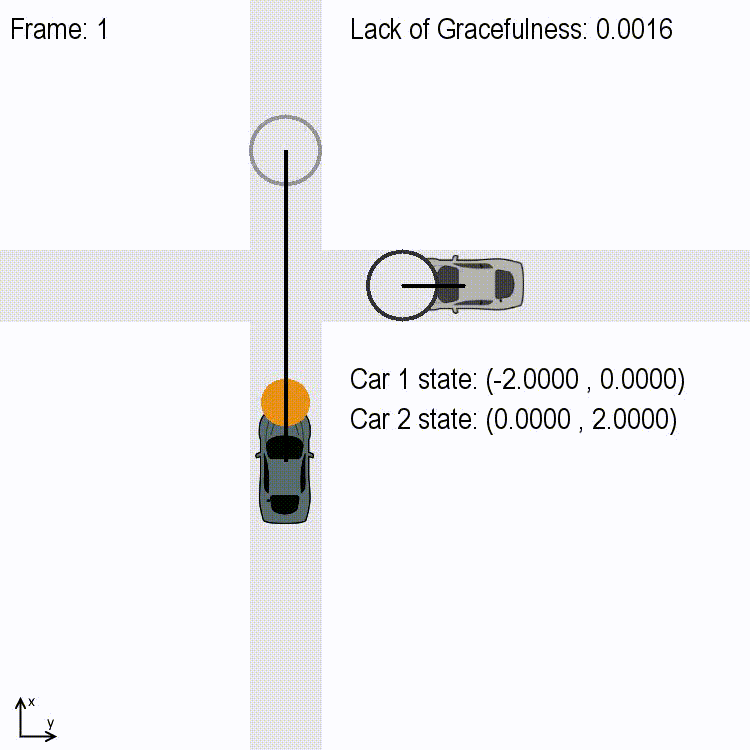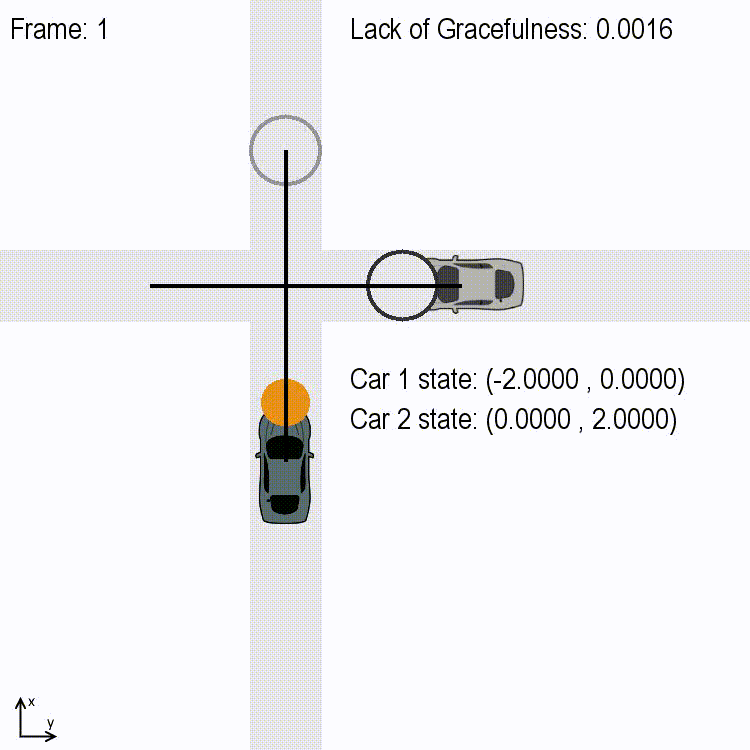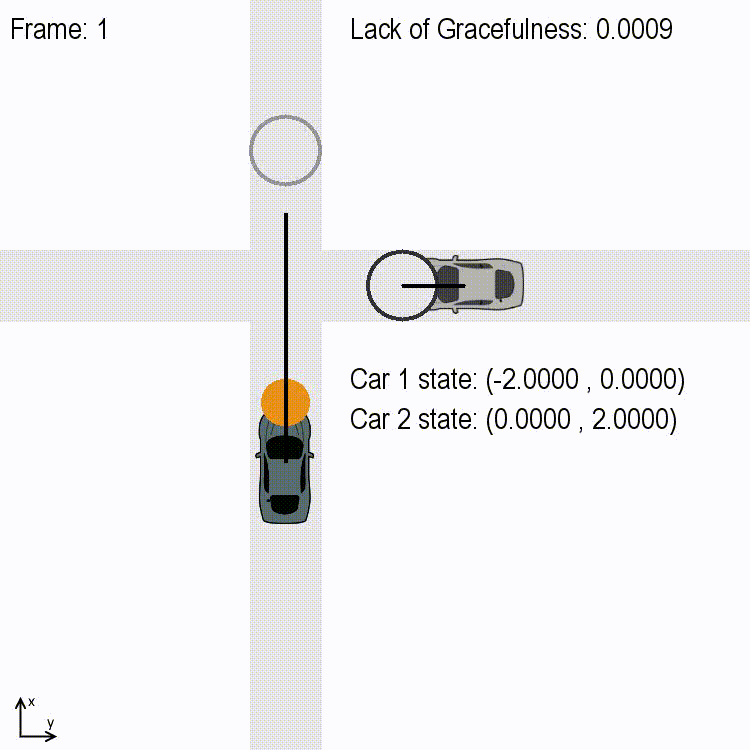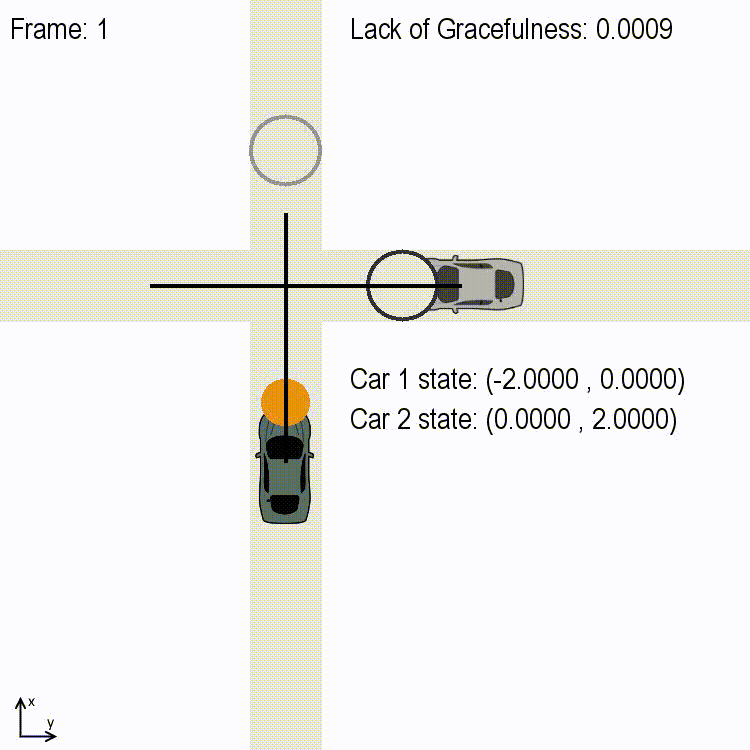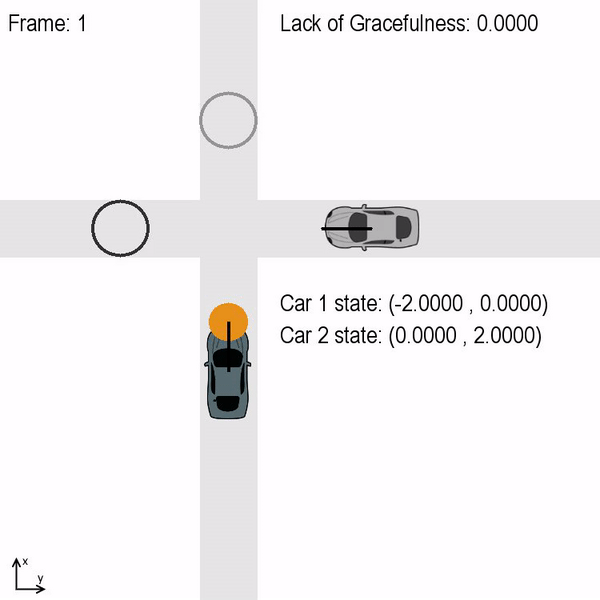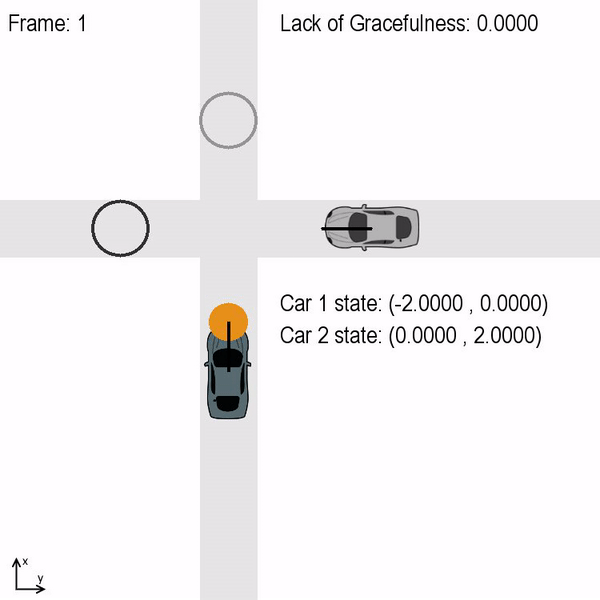Contributors: Steven Elliott, Yiwei Wang, Varun Jammula, Yi Ren, Wenlong Zhang, Yezhou Yang
- Overview
- From Honks to Socially Adept Motions
- Constitutive Model of Socially Adept Decision Making
- Driver Simulation Setup
- Instruction of reproduce the results
The past decade has witnessed rapid advancement of autonomous driving since the DARPA urban challenge. Till 2017, there were 46 large corporates across the world developing autonomous vehicles ( AVs). In the U.S., California and Arizona have allowed tests of AVs on public roads without human drivers. There are currently more than 600 AVs on the public roads in Arizona, including Alphabet's Waymo, who has started its paid road-sharing services in Phoenix. Undoubtedly, AVs have the potential to enable faster and safer commute, improve road and fuel efficiency, and increase the accessibility of transportation for seniors and people with disabilities. They have become a key component for future smart cities. However, there is still a long way before AVs can reliably interact with pedestrians and other vehicles in a safe, efficient, and socially-graceful manner.
Incidents have been reported where AVs stopped indefinitely at traffic intersections, due to misunderstanding of the intent of pedestrians and human drivers. The first claim against an AV manufacturer has been filed against General Motors in 2018, following a collision between a Cruise Automation 2016 Chevrolet Bolt and a motorcyclist, who alleged that the car swerved into his path without his agreement. Questions have also been raised regarding whether AV can reactive to and learn from actions such as honking from other vehicles.
The common cause of these incidents is the lack of a mechanism for AVs to understand the "social norms" of driving. Such norms include the driving style (e.g., how much space between vehicles is considered as acceptable), the driving strategy (e.g., whether one should consider others' intents and driving styles during its motion planning), and tacit driving rules (e.g., the "Pittsburgh left": taking a left turn just as the light turns green). These norms are often region- and culture-dependent, and may change along time. We hypothesize that being cognizant about unique social norms in new environments will allow an AV to correctly model interactions, infer intents of other agents, and derive socially adept motions (e.g., graceful and legible).
The objective of this project is to answer the following scientific questions towards the learning of social norms in driving:
-
Constitutive model of socially adept decision making?: What formalism of decision making is capable of creating socially adept motions, provided that the model incorporates the correct social norms?
-
Artificial general intelligence?: What learning mechanisms can effectively update this decision making model based on social feedback such as honking from other cars?
To answer these questions, we build our investigation upon decision models that mechanistically derive vehicle motions through game-theoretic control, where the control games are formulated based on both real-time observations and learned social norms. We will then propose a hierarchical learning framework that updates the AV's game formulations, and thus its understanding of social norms, through semantic reasoning and data-driven learning.
This repo serves as the base for all codes, data, meta-data we create during the investigation.
To answer the first question, we investigate a formalism of motion planning that enables empathy and social awareness of an AV agent. Empathy is defined as the agent's ability to answer the question: ``What do others' think about me?'', or In other words, to infer others' intents in conjunction with their estimation of the agent's self intent. We show that empathy is critical to the correct inference of others' intents. Social awareness is defined as the agent's ability to measure the discrepancy between what it does and what others may want it to do, and the actions wanted by others are those that allow others to achieve high-payoff equilibrium in an interaction game. Thus social awareness is built upon empathy. We show that incorporating social awareness into motion planning enriches the sophisticacy of the agent, allowing it to create passive aggressive motions that are more socially graceful than proactive ones.
Details of the motion planning algorithms can be found in our draft paper.
In the following, we demonstrate interactions between two agents (M and H) in a simple intersection scenario. Details of these interactions can be found in the draft paper.
The two agents are equipped with three different driving strategies, namely, reactive, proactive, and socially-aware:
-
A reactive agent M plans based on the inferred distribution of future motions of the other agent H.
-
A proactive M exploits the fact that H's future motion are dependent on M's. In the intersection case, M will act as if it does not care about safety and force H to yield. However, when facing an aggressive H who does care less about safety, being proactive can cause M to brake abruptly when it realizes H's aggressiveness.
-
A socially-aware M is built upon the proactive model, with an additional goal of reducing the lack of gracefulness.
Both agents take exactly the same actions at every time step since they share the same settings. Both switch between fast and slow movements along time, since their observation of the other's slow (fast) movement lead to their reaction of a fast (slow) movement.
An aggressive H moves at the highest speed all time, forcing M to yield.
Proactive M moves at a high speed in order to make H believe that it is aggressive.
M starts by pretending to be aggressive. However, as it approaches the intersection zone, it realizes that H is aggressive. Thus M stopped immediately and started to back off.
Socially-aware M moves in a way that gently force H to yield, leading to less "lack of gracefulness".
When H is aggressive, a socially-aware M can avoid the emergency stop as it naturally allows H to pass first.
We investigated the importance of empathy in intent inference using a similar experimental setting as above. We show that if M is modeled to believe that H already knows its true intent, then M will create false estimation of H's intent. The following videos compare the empathetic and non-empathetic cases.
M realizes early that H is driving more aggressively than itself, thus decides to yield before it enters the interaction zone.
By fixing its belief of what H thinks about M, M excludes plausible explanations of H's behavior and fails to correctly infer H's intent. As a result, M only realizes that H is not being non-aggressive after it encounters H in the interaction zone, and is forced to back off.
A Logitech G29 racing wheel is adopted to build a driving simulator which can be applied to record human drivng behavior. controlled_vehicle.py contains the dynamic model of human controlled vehicle.
Red car was controlled by human.
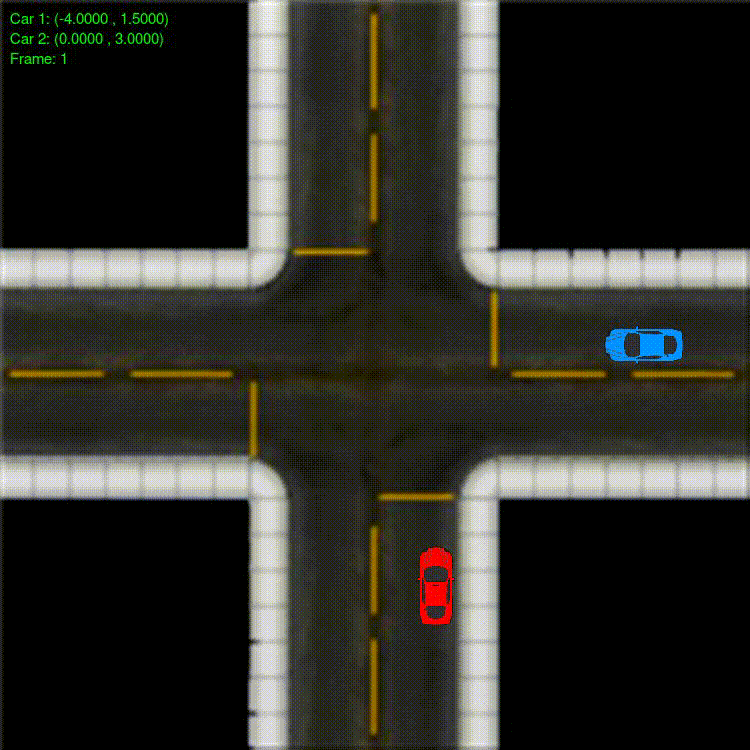
In general, the simulation can be conducted by running main.py. The motion planning methods can be edited by changing
